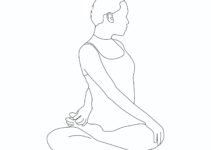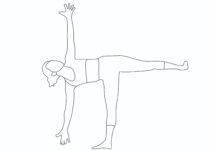What should you do before yoga class?
- For performing yoga poses, shauch (cleanliness) must be maintained. It means that the body and mind should be clean. This also includes the cleanliness of the surroundings. Yogic practices should be performed in a clean, airy place with a clean body and mind.
- Yoga should be practised before sunrise or within two hours. It could also be practised in the evening but with less benefit.
- Yogasana should be practised on an empty stomach. At least a gap of three to four hours after a full meal and two hours after light refreshment should be maintained.
- The bowel and bladder should be empty before performing yoga practices.
- Yoga should be practised at a well-ventilated place free from dust, smoke, foul odour, or too much wind.
- Asanas should be practised on an even ground. A carpet, folded blanket, or a mattress also should be spread on the floor to practice these comfortably.
- Yoga, if practised after a bath, becomes more accessible because the bath promotes uniform blood circulation throughout the body and facilitates the practice of yoga asanas.
- Loose, light, and comfortable clothes should be worn while practising yoga. Cotton clothes are preferable. Spectacles and wristwatches should be removed before the practice.
- Moderate food (Mitahara) is advised for better results. Oily and spicy food, smoking, and drinking liquor should be avoided.

What should one do during yoga class?
- While doing yoga, always breathe through the nose unless specifically told to do otherwise. Try to coordinate the breath with body movements.
- Yoga should be performed slowly and gradually, step by step, moving into the final pose.
- Body movements during yoga should be smooth. Jerks, force, and pressure should be avoided.
- Yoga should be practised with utmost awareness to bring harmony among the physical, pranic, mental, and spiritual levels.
- Shavasana should be performed after the practice session. It will remove fatigue and relax the mind and body. Shavasana can also be done during the practice session if the individual gets tired.
- people of all age groups may practice Yogasanas as per their capacity or as advised by the Yoga experts. Asanas should be practised within one’s capacity.
- People with fractured bones or chronic ailments/ diseases such as stomach ulcers, tuberculosis, hernia, high blood pressure, etc., and those recuperating from operations must avoid strenuous asanas. Before commencing asanas, they should consult a Yoga therapist or a doctor and follow their instructions. Please read: Yoga for Hernia
- asanas should be discontinued immediately if severe pain exists in any part of the body.
3 things you should do after yoga class
- Bath may be taken only after fifteen to thirty minutes have elapsed from the end of the yoga session.
- Food should not be taken immediately after performing yoga. Light food may be taken only after fifteen to thirty minutes of the yoga session.
- Yoga session should end with the prayer and shanti path.
Persons suffering from Dizziness or Blood pressure
- Do not start with Sirasana and Sarvangasana if you suffer from dizziness or high blood
- All forward bending poses are beneficial for persons suffering from either high or low blood
Warning for persons affected by pus in the ears
- Those suffering from pus in the ears or retina displacement should not attempt topsy-turvy poses.
Special Provisions for Women
- Menstruation: Avoid asanas during the menstrual period.
- Pregnancy: All the asanas can be practised during the first three months.
- After delivery: No asanas should be done during the first month after delivery. After that, they may be practised mildly
Role of Yoga in Women of Reproductive Age
Pregnancy seems to be an ideal situation to test the effects of yogic practices. There have been studies
to prove the correlation of a high state of anxiety with high resistance index (RI) of uterine artery and the
presence of pre-diastolic notch (PDN). Yogic practices decrease the sympathetic tone hence, they bring about a decrease in peripheral vascular resistance. In a study by Damodaran Asha et al, it has been reported that yogic practices bring reduction in blood pressure, blood glucose, and vanillylmandelic acid (VMA) catecholamine levels. They also report a decrease in sympathetic oxidant stress due to regular yoga practices. Regular practice of Asanas also promotes placental growth and vascularity. It might prove useful to reverse maternal endothelial dysfunction. Practice of Pranayama improves respiratory adaptability during pregnancy. Stress is known to affect menstrual cycle. Yoga being the science of mind helps to cope with the stress in a better way. Yogic practices help to relieve symptoms of anxiety associated with PMS. Practices of Mantra, Japa, devotional songs, and Naada Yoga can elevate the mood by bringing about a balance in the levels of hormones.





